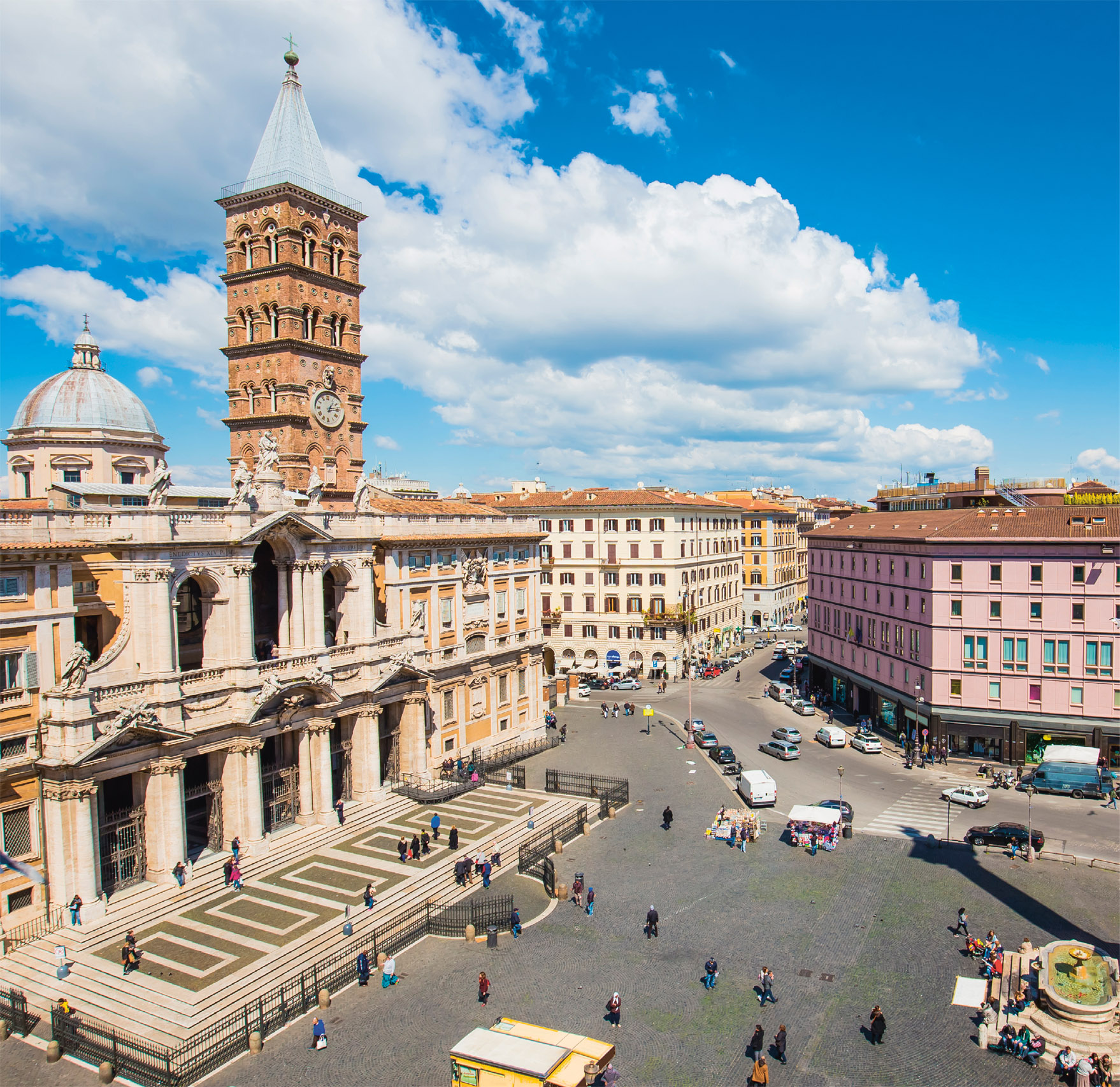
t The 18th-century exterior of Santa Maria Maggiore on the piazza of the same name

t The 18th-century exterior of Santa Maria Maggiore on the piazza of the same name
Experience Esquiline
The Esquiline is the largest of Rome’s seven hills. In Imperial Rome the western slopes overlooking the Forum housed the crowded slums of the Suburra. On the eastern side there were a few villas belonging to wealthy citizens such as Maecenas, patron of the arts and adviser to Augustus. The essential character of the place has persisted through two millennia; it is still one of the poorer quarters of the city. The area is now heavily built up, except for a rather seedy park on the Colle Oppio, on the southern spur of the Esquiline, where you can see the remains of the Baths of Titus, the Baths of Trajan and Nero’s Domus Aurea. The district’s main interest, however, lies in its churches. Many of these were founded on the sites of private houses where Christians met to worship secretly in the days when their religion was banned.